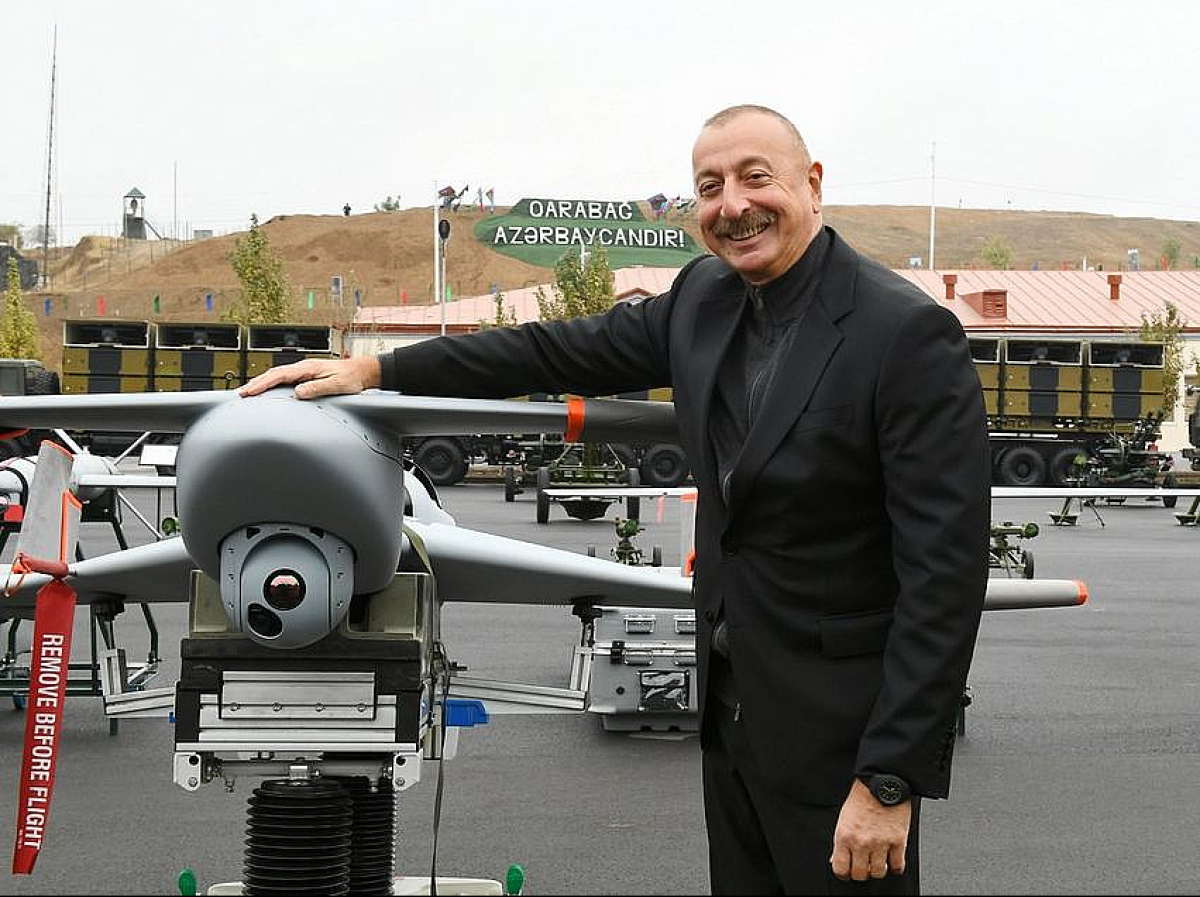 104
104
If a person deliberately acts against his neighbour to murder him by scheming, you are to take him to die even if he is at my altar.
In the aftermath of the Russo-Persian Wars (1804–1828), Azerbaijanis living in northern Aras River lamented the Russian occupation and their tragic separation from their fatherland, Iran, with shattered hearts and tear-filled eyes. Since then, Azerbaijani folk music is often characterised by melancholy tunes, grieving the catastrophe.
After the collapse of the Soviet Union, Nagorno-Karabakh, a mountainous enclave region, was wrested by the Russian-backed Armenians from Azerbaijan in an ethnic clash in the early 1990s.
At the outbreak of the war, the Iranian leadership did not hesitate to assign senior military advisers such as General Mansour Haghighat-Pour to organise the disorderly and chaotic Azeri troops. [1]
In the wake of the confrontations against the Armenian aggressors, Haghighat-Pour and his aids personally oversaw the equipping and training of the Azerbaijani army.
At that time, Heydar Aliyev, the then president of Azerbaijan and a former shrewd KGB general, stated in a military parade that he intended to award the Iranian officer, Haghighat-Pour, with Azerbaijan’s Order of Honor. [2]
Hundreds of noble Iranians sacrificed their lives during the first Nagorno-Karabakh War (1988–1994) to liberate Armenian-occupied territories. There is still a cemetery in Baku where fallen Iranian martyrs rest in heavenly peace. [3]
Iran’s armed forces also responded to the Armenian advancement toward Nakhchivan, a landlocked Azeri territory, by deploying artilleries to ensure that a ferocious Iranian response would face any Armenian move into Nakhchivan.
Iran also greeted with open arms over 70,000 Azeri civilian refugees who fled from the invading Armenian forces. The enormous scale of Azeri refugees in a country which was reeling from a slumping economy following eight years of war with Iraq’s Ba’athist regime was considered a “duty” by the Iranian officials.
Following the cessation of hostilities between Azerbaijan and Armenian, the Supreme Leader of Iran, Ayatollah Ali Khamenei, who is himself of Azerbaijani descent, visited Tabriz, the capital of Iran’s northwestern province of Azerbaijan, on July 27, 1993, saying, “The Armenian government and the Armenians of Karabakh have recently committed oppressive measures against the Muslims in that region, and we condemn these atrocities. We expect that the Armenians in Iran will equally denounce the mistreatment of Armenians.” [4]
On September 27, 2020, a long-smouldering conflict between Armenia and Azerbaijan over the Nagorno-Karabakh region rapidly escalated into a 44-day military conflagration. In the wake of fierce clashes between Baku and Yerevan, the representatives of Ayatollah Khamenei, who are also Imams of Friday prayers in four northwestern Iranian Azeri-populated provinces, declared that they unequivocally support the liberation of the occupied Azerbaijani territories following religious obligations. [5]
The Azeri-speaking clergymen regarded the liberation of Armenian-occupied territories as an inalienable national right of the Azerbaijanis. In addition, Seyyed Mohammad Ali Ale-Hashem, the representative of Ayatollah Khamenei in East Azerbaijan province, cited the Iranian Leader as saying that Karabakh is a part of the Islamic world. [6]
In a speech broadcast live on state television on November 3, 2020, Iran’s Supreme Leader said: “Azerbaijani lands occupied by Armenia should be liberated and returned to Azerbaijan,” according to state television. He also highlighted that the war should end quickly, the ethnic Armenians of Nagorno-Karabakh be protected, and no boundary modifications are acceptable.
After the liberation of Şuşa, the second-largest city in Nagorno-Karabakh, on November 9, 2020, the Armenian Prime Minister, the Presidents of Azerbaijan and Russia signed a trilateral ceasefire agreement at Kremlin, putting a temporary end to the lingering conflict that had been frozen since 1994.
The liberation of the occupied areas by the Republic of Azerbaijan was deemed a felicitous event and met with jubilation by the Iranian public and government, as the two countries share profound cultural, religious, and historical heritage.
Nevertheless, the loss of Armenian control of one-third of Nagorno-Karabakh and all seven Azerbaijani districts it previously controlled heralded a dramatic shift in geopolitical realities in the South Caucasus, a mosaic of intermingled ethnic groups.
Treason seldom dwells with courage
However, the Republic of Azerbaijan forgot the adage: “Nōlī manum qvæ tē alit mordēre,” which translates as ‘Do not bite the hand that feeds you.’
Azerbaijan’s long-coveted ambition to have unrestricted access to its split part, the Nakhchivan Autonomous Republic, through the so-called “Zangezur Corridor,” is the most salient factor in recent tensions between Baku and Yerevan.
However, the crux of the problem is that, if implemented, the purported corridor that passes through Armenia’s southern Syunik province would sever Iran’s connections with Armenia.
Naturally, Armenia opposes this scenario because it constitutes a blatant violation of its sovereignty over a vital part of its territory, often described as a lifeline for the Armenian nation.
Iran also would not accept any modifications to its northern borders, which block Iran from accessing the European markets and jeopardise its commercial North-South Corridor, which links Iran to Russia and Central Asian republics.
With its greedy eyes on Syunik, Baku’s recent bellicose provocations pose a grave geopolitical concern for Iran. As Ayatollah Khamenei recently reminded Turkish President Erdogan, Tehran will not tolerate the closure of its ancient borders with Armenia. The Iranian armed forces will undoubtedly react with a crushing military blow if Aliyev’s regime is determined in its vicious scheme to occupy the 38-kilometre-wide Jermuk region of Armenia to reach Nakhchivan.
[1] https://www.youtube.com/watch?v=PqyMCUfvPeY
[2] https://www.panorama.am/en/news/2013/04/08/mansour-haghighat-pour/547275
[4] https://farsi.khamenei.ir/news-content?id=10527
Comment
Post a comment for this article